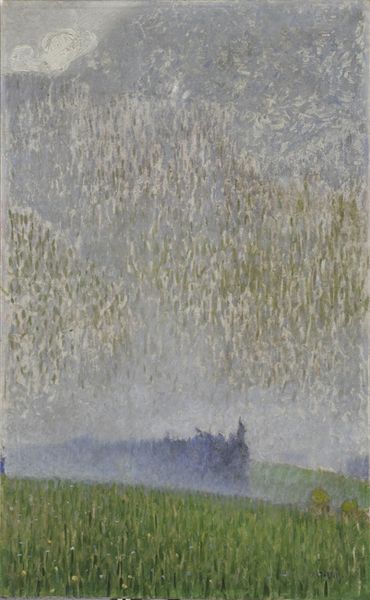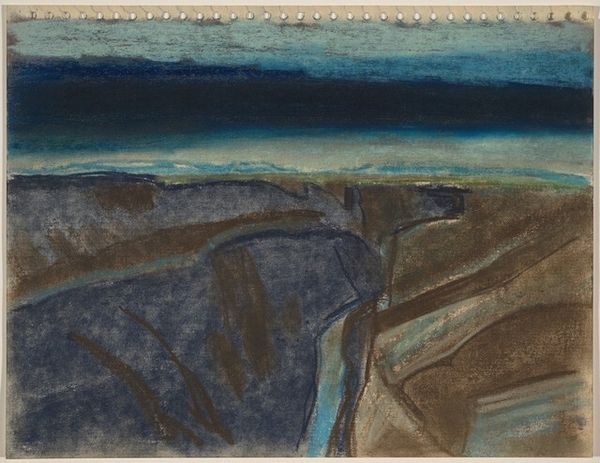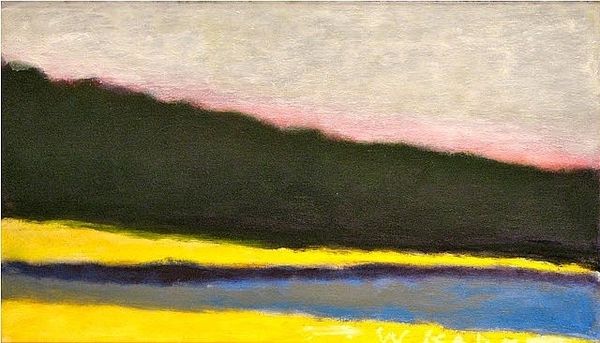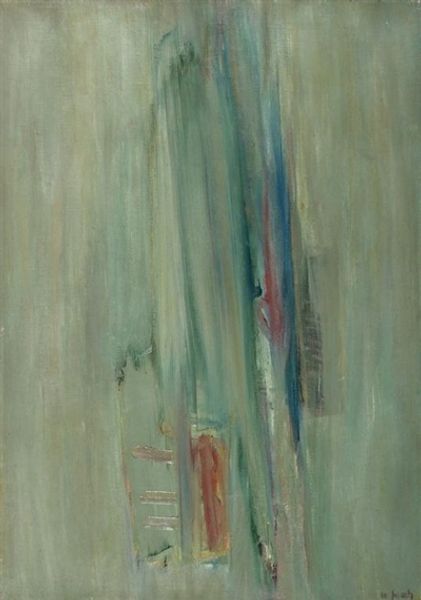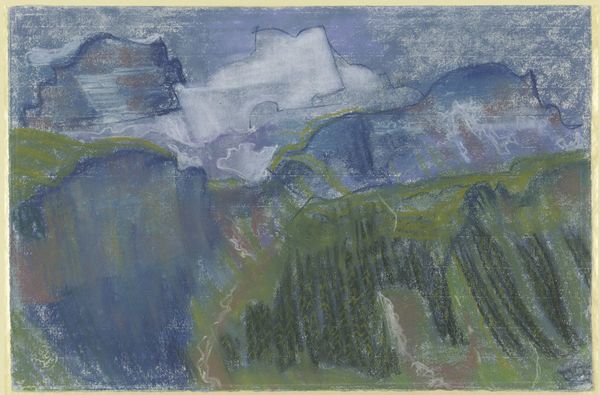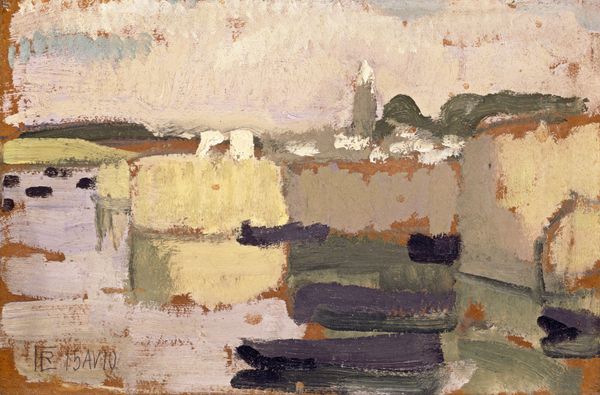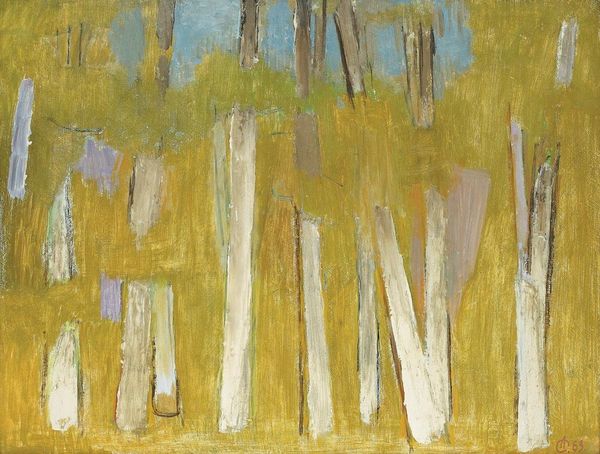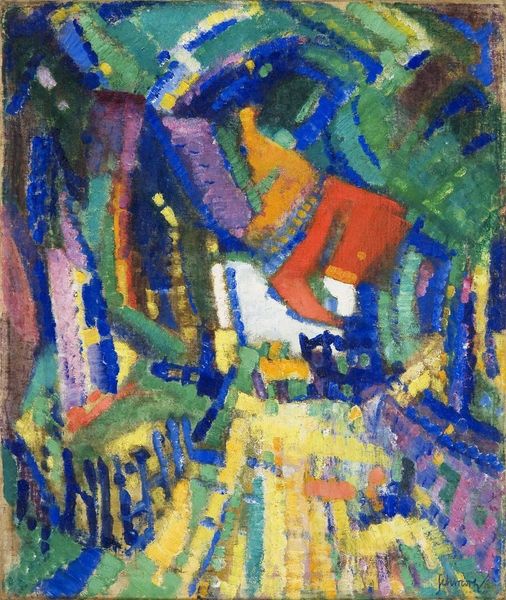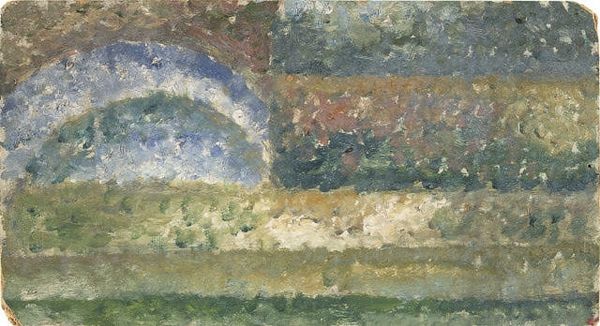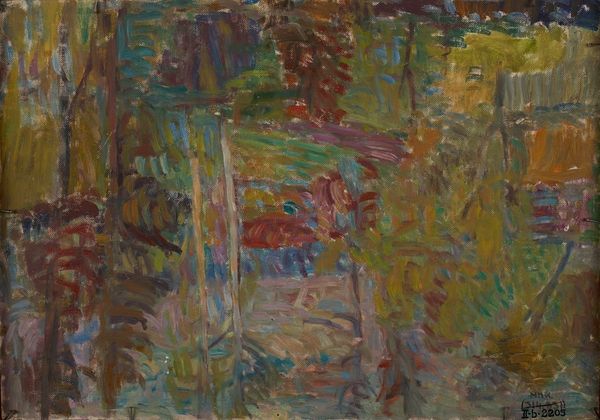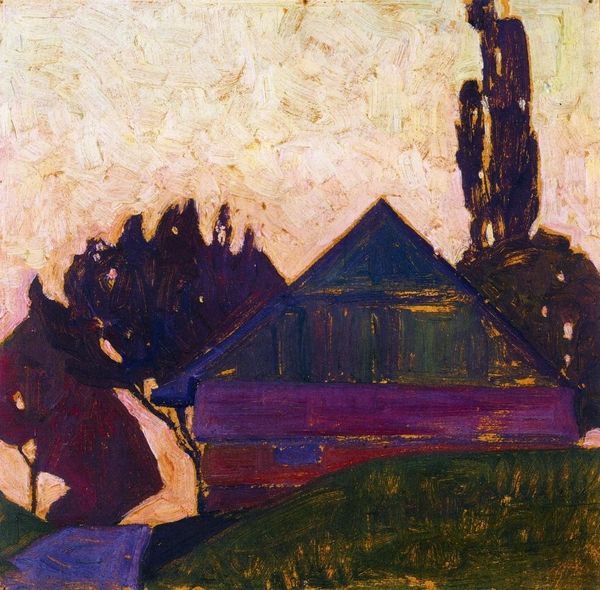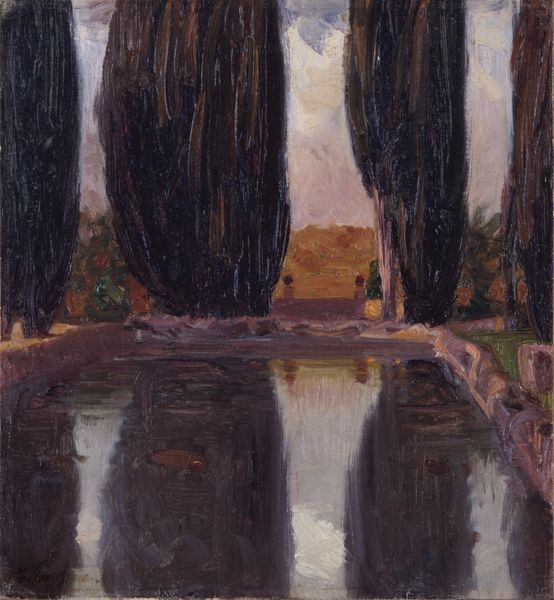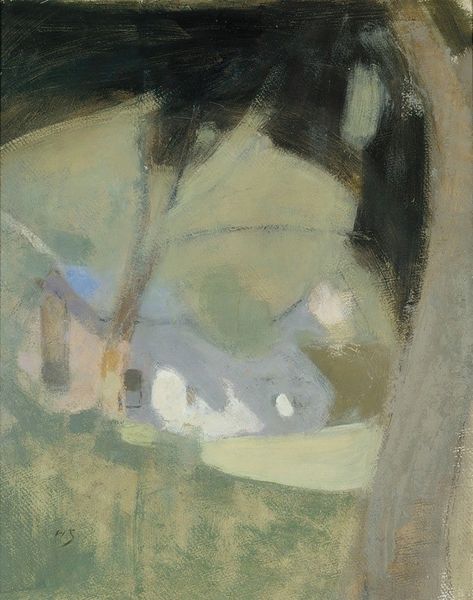
oil-paint, watercolor
#
oil-paint
#
landscape
#
german-expressionism
#
oil painting
#
watercolor
#
expressionism
#
abstraction
#
watercolor
Copyright: Public Domain: Artvee
Curator: Looking at Egon Schiele’s "Landschaftsstudie; Hirschbergen – Böhmerwald" from 1908, I’m immediately drawn to how starkly simplified everything is. Editor: Simplified, but intensely somber. It feels less like a depiction of the landscape and more like a heavy, almost melancholic mood hanging over it, conveyed through those dominant washes of deep blues and muted greens. What's particularly striking is the visible texture of the watercolour paper itself. Curator: The simplification certainly adds to the emotive power. He was very interested in externalising interiority onto the landscape, projecting feelings onto it. I wonder, considering Schiele’s German Expressionist lens, what sort of landscape symbolism you perceive at work? Editor: I see a raw, unfiltered presentation. Schiele's bold use of watercolour here is quite revealing. There is something really tactile to consider in that loose, almost careless application; he doesn’t hide the process. It gives me a sense of his engagement with his medium—a rather gestural recording of the world around him, not an idealized recreation. It feels very immediate and human. Curator: Exactly. The materiality communicates a sensory experience. Schiele was less interested in pure visual fidelity. He transforms nature into a visual cipher reflecting human psychology, specifically the disquiet and anxiety of his time. Look at the very angular lines creating harsh divides. What appears to be a bucolic setting is now a site of angst. Editor: Yes, and even the colours play a part. These aren’t natural greens or blues; they're emotionally heightened representations. Given Schiele's socio-economic context and personal struggles during that period, his approach of "distorting" conventional representation of natural scenes is interesting when considering materiality as another level of messaging and the way he made paintings under those circumstances. It allows him to tap into his emotion at the core. Curator: Precisely! And seeing the cultural memory encoded through these intense visual and gestural markings, his landscape becomes more than just a geographical location. Editor: I see Schiele is also using his materials here to communicate something intensely personal about himself within his own particular time. A landscape rendered not as picturesque scenery but as an expressive medium in its own right. Curator: In sum, the piece prompts reflections about nature and feelings in a broader historical context. Editor: For me, it underlines how material can communicate cultural contexts, becoming a sensory diary to interpret from its visual presentation and historical setting.
Comments
No comments
Be the first to comment and join the conversation on the ultimate creative platform.
